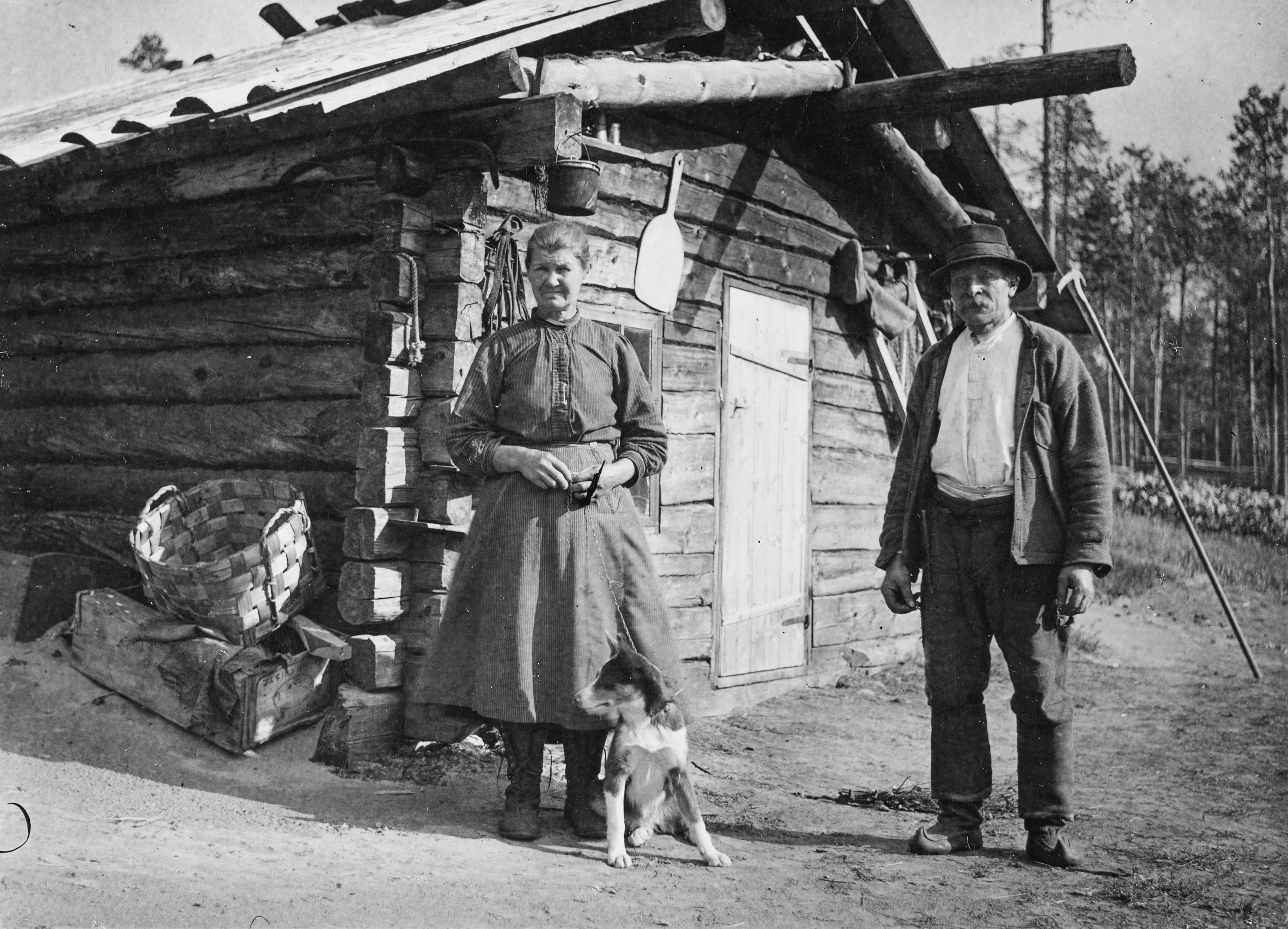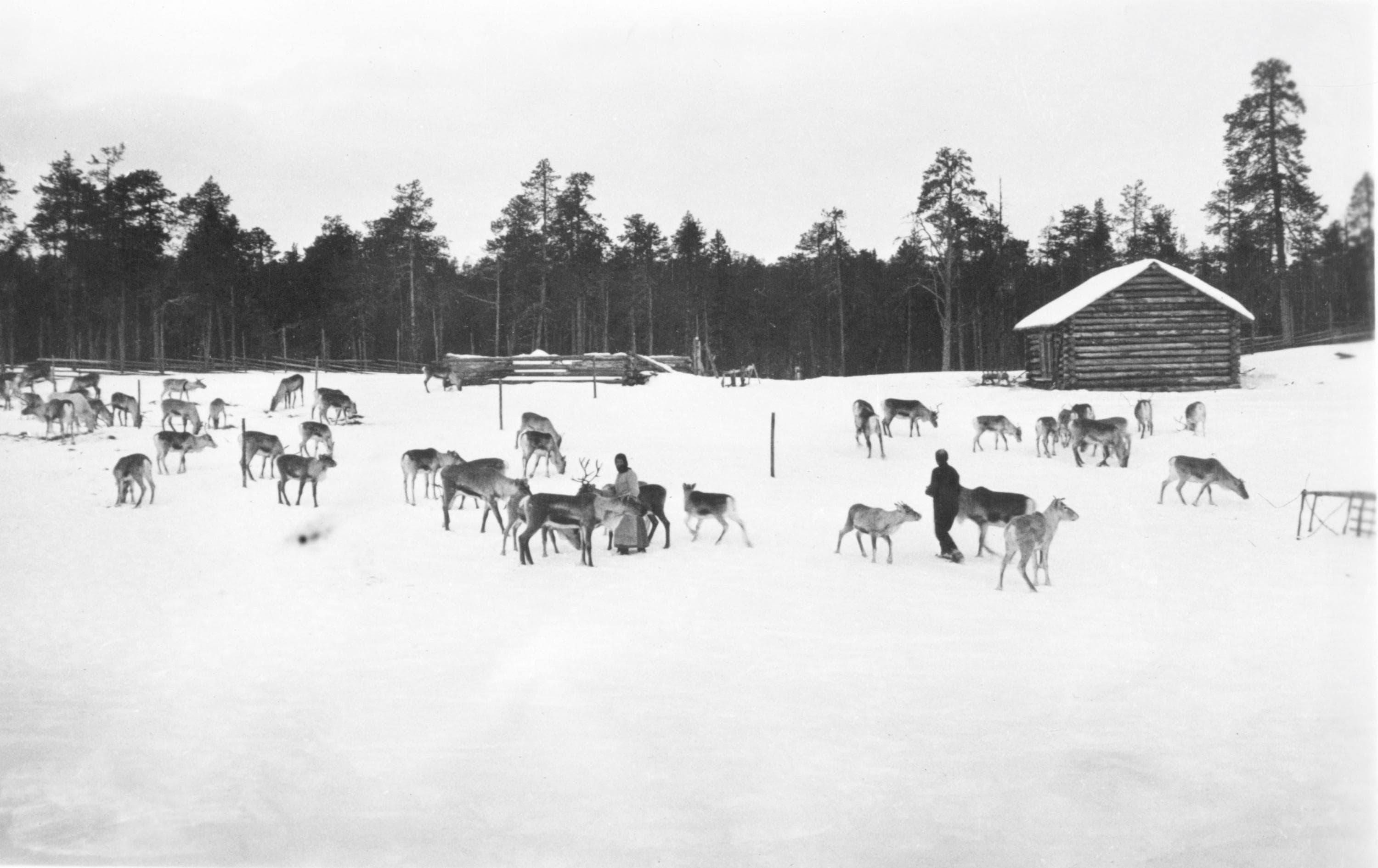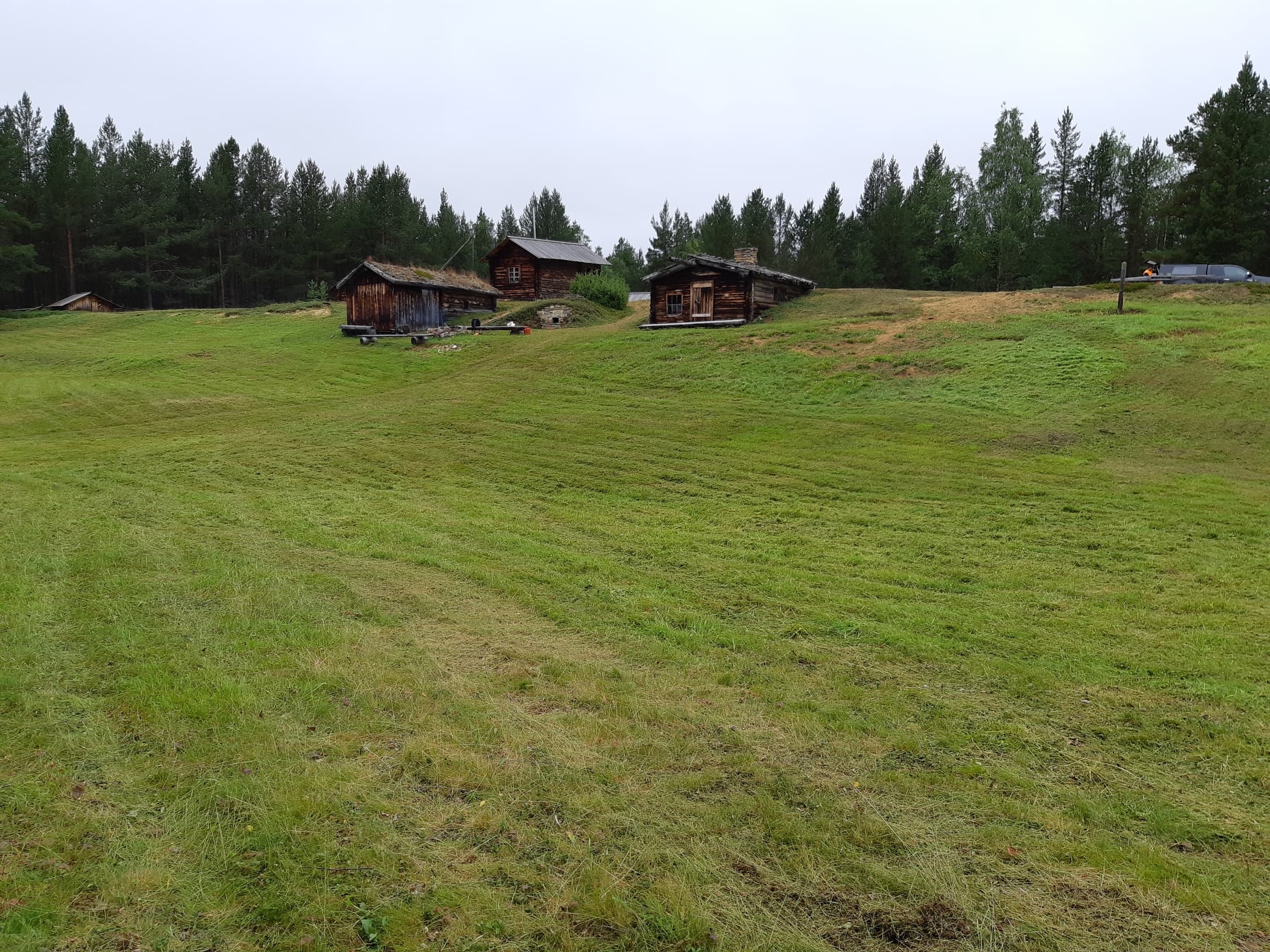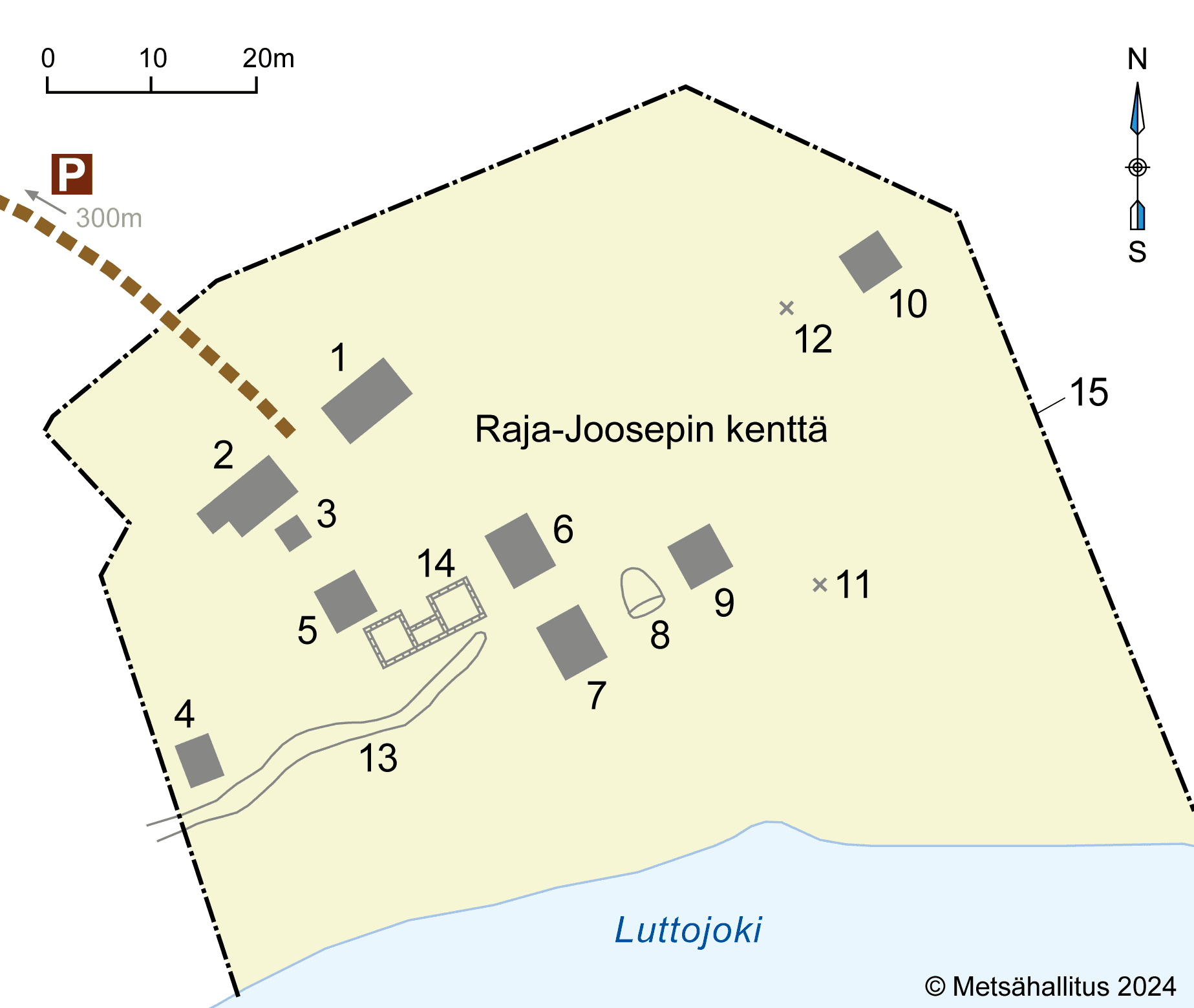Raja-Jooseppi Homestead
The Raja-Jooseppi homestead is a nationally valuable cultural heritage area and protected by decree of the Finnish Government. At the Raja-Jooseppi homestead you can explore the grounds of the home that Joosef Sallila from Parkano built for himself and his partner Matilda Lehikoinen in the early 1900s. The site has remained almost unchanged: the buildings have been renovated and the grounds have been kept open. There is also a trench dating from the war (1939 - 1945). The Raja-Jooseppi homestead belongs to the Natura area of Urho Kekkonen National Park, Sompio and Kemihaara.
Dwellers of the Homestead
The Raja-Jooseppi homestead is located on the banks of River Luttojoki, close to the Russian border. Behind River Luttojoki, there is a gorgeous view of the hills on the Russian side. Petsamo was part of Finland from 1920 - 1944, which is why the location of the national border has varied during the lives of Jooseppi and Matilda; for quite a long time, they lived at a distance of one hundred kilometres from the Russian border.
Around 1910, Jooseppi (Joosef) Juhonpoika Sallila from Parkano and his partner Matilda Lehikoinen came downstream and onto the bank of River Luttojoki. There was a sauna that had been built by two reindeer men named Uula Valle and Arvid Pokka in the middle of wilderness, and Jooseppi and Matilda settled down in the sauna building.

Livelihoods
They made their livelihood from gold digging, pearlfishing, fishing, hunting and reindeer husbandry. They also bought cows and sheep to the farm. One sign of prosperity was the large potato field. Hay was mowed from the grounds and the nearby island.

Buildings
Within ten years, a group of hand-made buildings appeared on the grounds. First they lived in the sauna building, but soon they built a new cottage with wall logs that were carved white. The cowshed was made for two cows, but at its best it housed four cows. The potato cellar, which was dug upstream, was absolutely necessary for storing food. The baking oven was set up outside. The grounds and the surrounding rail fence were completed in 1920.
Huhti-Heikki
At the beginning of 1920, a vagabond called Huhti-Heikki from Ähtäri arrived at the homestead. While in Canada, he had heard about the annexation of Petsamo to Finland and came to River Luttojoki to take up pearlfishing. Jooseppi persuaded Heikki to stay on the same riverbank and so Huhti-Heikki built his own cottage at the homestead and stayed there for about four years.
Flora on the Raja-Jooseppi Grounds
The beautiful grounds of Raja-Jooseppi have a wide variety of hay and heath fields, fresh hay meadows and shortgrass flood meadows. The field is maintained by mowing and clearing the facing island of birch scrub.
Visitors should lay down on the slope field to listen to the rippling of water and watch clouds drift by. Or they could also take this opportunity to explore the low vegetation more closely. Mixed in with the other species, it is possible to find a rare common moonwort (Botrychium lunaria), leather grapefern (Botrychium multifidum), northern moonwort (Botrychium boreale) or lance-leaved grapefern (Botrychium lanceolatum). Some of the more common species found here are European goldenrod, mountain everlasting, harebell, Alpine bistort, sweetgrass and colonial bentgrass.
The goal is to keep the residential area open and prevent shrub growth, thereby preserving the typical and endangered meadow species.

The Raja-Jooseppi Homestead's Site Plan
There are the following buildings and structures on the grounds of the Raja-Jooseppi homestead:
- Barn
- Cowshed and dry toilet
- Well
- Fish cellar
- Sheep house
- Huhti-Heikki's hut
- Smoke sauna
- Earth oven
- Jooseppi's hut
- Storehouse
- Pole for attaching reindeer
- Leather softening tool
- Trench
- Foundations of Jooseppi's new house
- Fence

Visit to Raja-Jooseppi homestead
You may visit the Raja-Jooseppi homestead throughout the year, but the road leading to the homestead is not kept open in winter time. The visit to the homestead and its buildings is free of charge.
The destination can be visited freely and no frontier zone permit is needed. The shift of the frontier zone has opened the homestead to all visitors. When the soil is unfrozen, you can walk to the Raja-Jooseppi homestead along the road that goes from the border of the Urho Kekkonen National Park. In winter you can ski to the homestead. When visiting the destination, please bear in mind that it is not permitted to visit the frontier zone. Any attempt to do so will raise an alarm and there will be consequences in accordance with the Border Guard Act.
It is prohibited to make a campfire in the area.